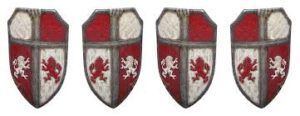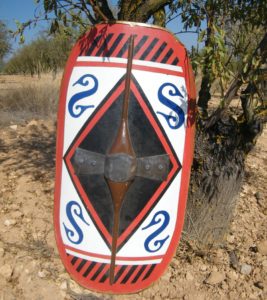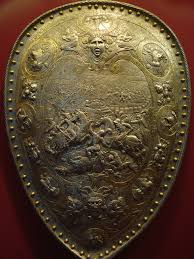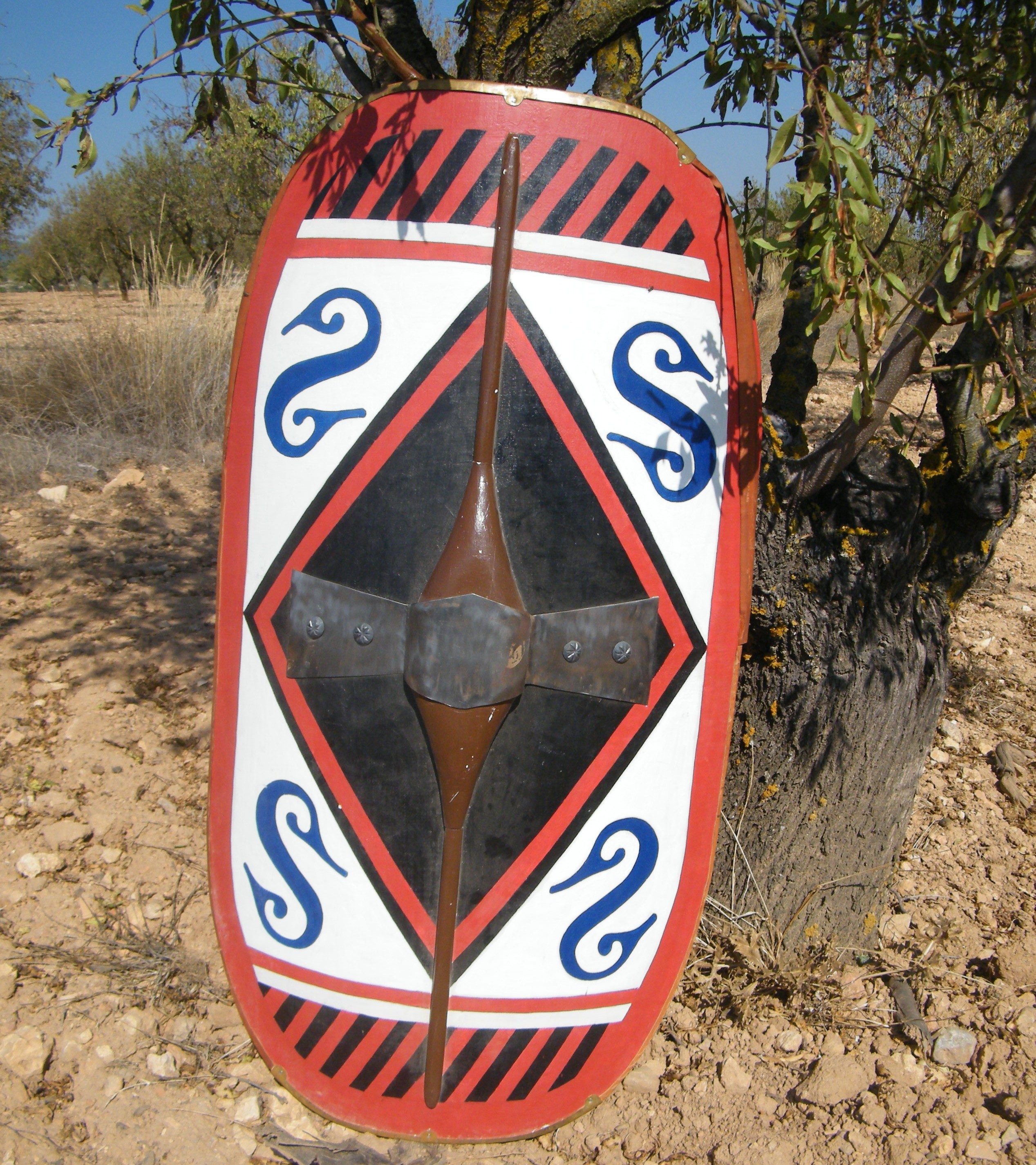Ancient Roman Shields: The 5th century ‘Notitia Dignitatum’, which cataloged military units throughout the empire, was an excellent guide to late Roman shield designs. It also confirmed that the shield patterns of the later empire were used to designate individual units.
Roman Shield designs
However sometimes elaborate designs would not have lasted long on the campaign, and individual soldiers would have had to make do by giving their shields a quick coat of paint, in their regiments’ official colors.

Sculptural evidence, for example on the metopes from the Tropaeum Traiani, showed that they could also be used for the same purpose on the shields.
Roman shield formation
According to Polybius, the scutum gave Roman soldiers an edge over their Carthaginian enemies during the Punic Wars. The shape of the scutum allowed packed formations of legionaries to overlap their shields to provide an effective barrier against missiles.

The most novel as well as most specialized, for it, afforded negligible protection against other attacks use was the testudo which implied “tortoise” in Latin which added legionnaires holding shields from above to protect against descending missiles such as arrows or objects thrown by defenders on walls.
Cassius Dio described scuta being used to aid an ambush. Additionally, Dio also noted the use of the scutum as a tool of psychological warfare during the capture of Syracuse.
Historical Facts of Roman Shields
In 27 BC emperor Augustus was awarded a golden shield by the Senate for his part in ending the civil war and ‘restoring’ the Republic, according to the ‘Res Gestae Divi Augusti.’ The shield, the Res Gestae stated, was hung outside the Curia Julia, serving as a symbol of the Princeps’ “valor, clemency, justice, and piety.”

The 5th-century writer Vegetius added that scuta helped in identification. However since Vegetius was not a military man and his works like for example De Re Militari freely, anachronistically mixed the present with the dim and distant past. Ancient Roman Shields in Vegetius’ day were used to distinguish between units, but, contrary to his claim here, there is little evidence that this was true of the earlier empire.
Roman Scutum
The Roman Scutum actually revealed nothing about life in Ancient Rome. It was a piece of military equipment employed by the Roman Army to protect its soldiers. The standard legionary tactic was to induce the opponent to take a large overhand strike with a sword or Axe and get it stuck in the Scutum.

While the opponent tried to pull his weapon out, the Roman soldier would stab his opponent in the chest with the Gladius which was a Roman Short Sword, believed to have been developed from Spanish swords after the Roman conquest of Spain. It was a shield, nothing more nothing less, and was not altogether new in history.
Ancient Roman Shields Imperial Scutum
One could say it revealed that Rome was one, fairly militaristic, and two, highly intelligent in the use of its army, though looking at an individual Scutum it would not be possible to infer that. Hence, reading the various histories written by Roman authors on both tactics and what happened during the time of the Caesars can provide the best help.

Caesar himself wrote extensively on his campaigns and has been judged to be highly accurate. Reading classical authors and understanding what they say, as well as reading more modern histories to provide a basic knowledge then looking at one piece of equipment developed by that civilization, especially as military equipment is, however, not the whole story. Rome’s power may have rested on its army, but there was more to Rome than its army.




